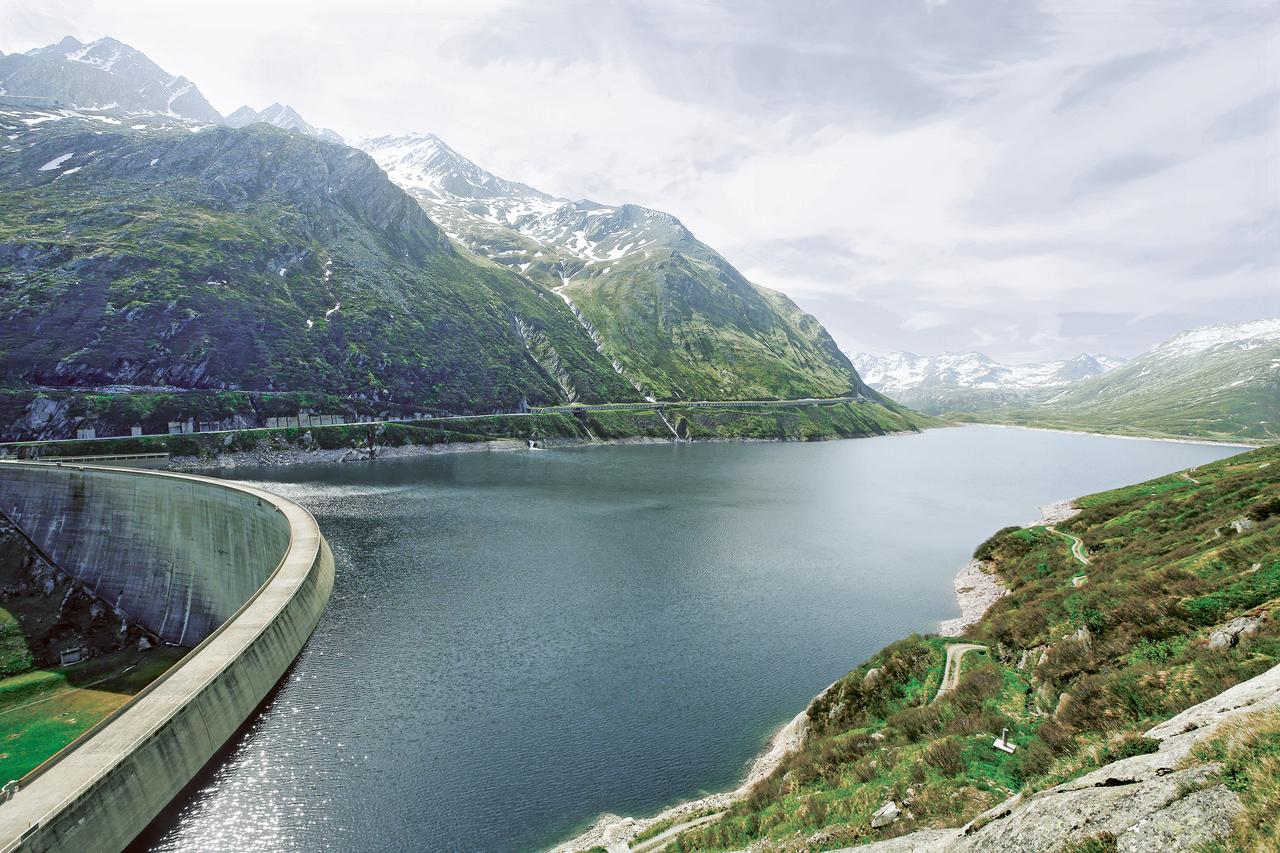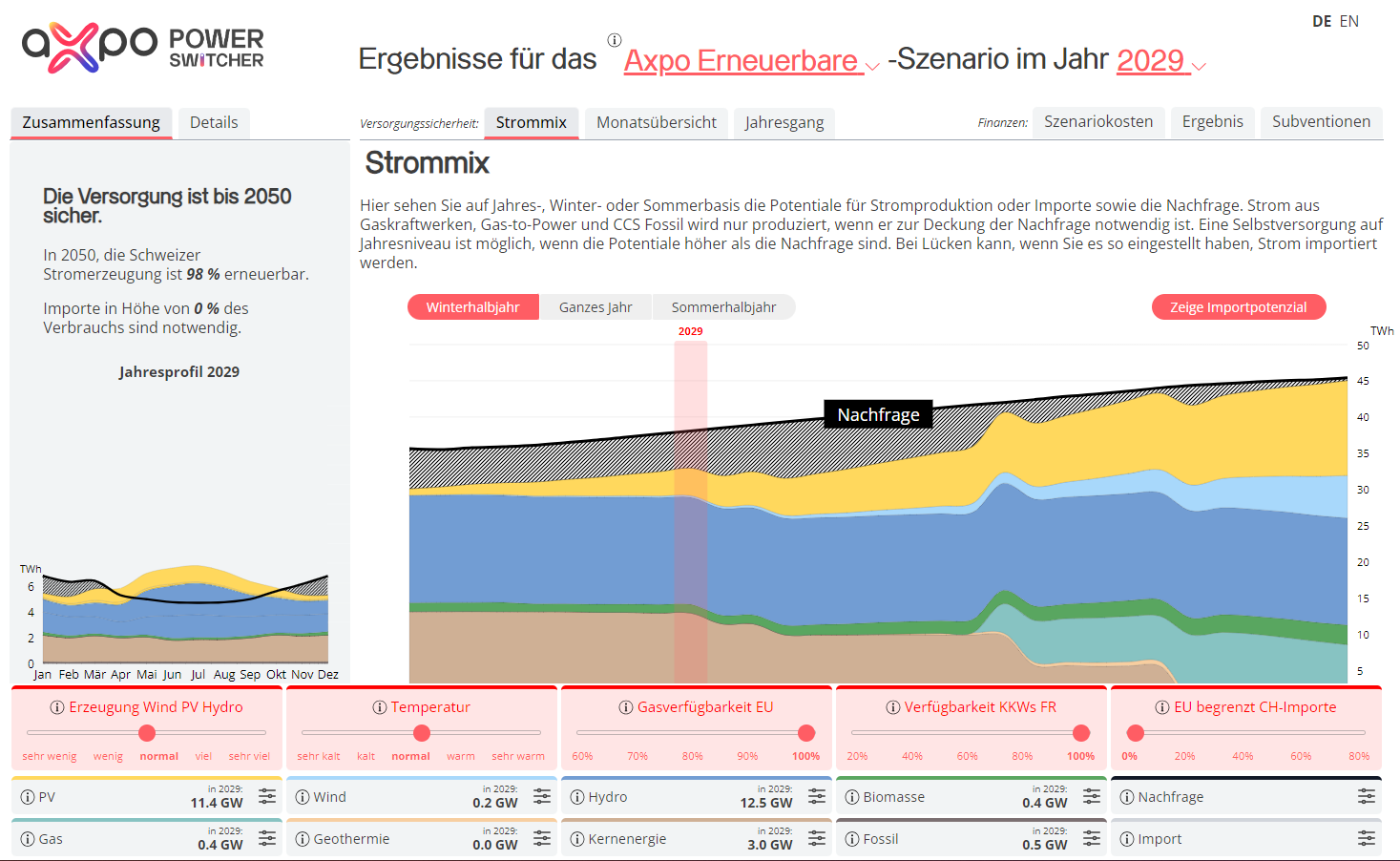05.06.2018 | Axpo presents an innovative tool at the 2018 "Powertagen" fair
Grid planning with the push of a button
The "Powertagen" fair takes place from 5 to 7 June at the Messe Zurich. The most important Swiss power industry players meet at the event to present innovations and discuss the latest developments in the energy world. Axpo will be present at the event with the ERIS tool an innovative method to analysis grid quality and supply security.
Axpo is presenting a new method to calculate and analyse power grid quality at "Powertagen", an industry fair that takes place every two years: The ERIS grid quality index was developed and patented by Axpo’s Strategic Asset Management department. With just a mouse click the tool provides values for supply security and supports targeted investment planning. Why, what, how and for whom? We asked Daniel Moor, Head of Strategic Asset Management at Axpo, about ERIS.
Why is there a need for a new grid analysis method?
The power grid is the backbone for reliable power supply. With increasingly decentralised, irregular power generation from renewable energies, grid planning has become more challenging and dynamic for the operators. In terms of future grid development, our current analytic methods do not have the ability to qualitatively assess supply security so that investments can be planned in a timely, targeted manner.
What were the requirements for the new tool?
The goal was to create a tool that would provide us and other grid operators with a simple, transparent method for planning entire grids as well as subgrids. It must be possible to quickly assess supply security and to easily identify the actions that need to be taken to optimise grids. Plant condition must also be taken into account in this process. This is the focus of the ERIS tool.
ERIS stands for Evaluation of Reliability Index for Electric Systems and measures the quality of power grid supply security. How does that work?
The ERIS method is supported by a software that can be integrated in existing grid analysis programmes as an add-on module. At the push of a button ERIS generates a number between 0 and 120 based on the operator’s collected, recorded grid data. This number represents the grid quality. The number 120 corresponds to an ideal grid. Results in the range of 80 to 100 are the goal. The lower the value, the greater the need for grid refurbishment or expansion. Values over 100 indicate that the grid is over-dimensioned for the specified requirements.
That sounds relatively simple. What can ERIS do that the current analysis methods cannot?
It might sound simple. But ERIS uses a complex calculation model that we developed. Up to now the quality figures were only partially conclusive because certain, relevant criteria could not be taken into account. For the first time the ERIS indicators include all the grid-relevant parameters related to load flow, grid topology and plant condition. A total of 39 factors are rated, calculated and analysed to create a reliable quality index. ERIS can compare different variants for grid optimisation and easily prioritise them. This makes it possible to better target investments and assess the impact on supply security. As a result, it is possible to optimise costs, which ultimately bene-fits grid customers.
Can you give us a concrete example?
The usual indicators for grid availability analysis only take certain aspects into account or are very difficult to determine. In addition, expansion and refurbishment planning is normally treated separately. ERIS integrates all the relevant criteria and provides an overall picture. For example, when a region has been supplied by only one line for a longer period of time and older plants are also involved, this represents a higher supply risk. The current indicators only partially take these risks into account or only do so when a line actually breaks down. ERIS combines the reduced availabil-ity of the connection with the age of the plants and grid load. In this way any possible actions that need to be taken can be identified early on.
Where is ERIS already in use?
Axpo has already been using ERIS successfully for about two years for both large high voltage as well as medium voltage grids. Axpo's international partner Neplan has integrated ERIS as an add-on module in its grid planning software and has been marketing it to energy supply and industrial companies since this spring. The Neplan software is in use for transmission and distribution grids in over 100 countries. The ideal partnership to bring Axpo's promising innovation to the market! More partnerships will be established.
What are the next steps?
We see more potential for ERIS and are looking for additional software providers that would like to include ERIS in their IT portfolio. From the beginning, we decided not to grant exclusive rights for the ERIS method, hence making more partnerships possible. The rights will stay with Axpo in all cases.
Why does Axpo attend the "Powertagen" fair and what is being presented?
The energy world is undergoing constant change, making it important for all the players to get together at this popular Swiss power industry event. Axpo Grids is presenting its grid services for the fourth time. In addition to the ERIS product, the focus is on battery storage solutions and teleprotection for third markets. The fair has started and we expect to have some interesting discussions.




.jpg)





